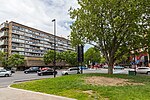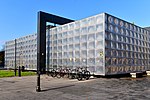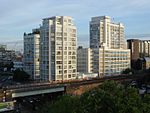Bakerloo line extension

The Bakerloo line extension is a proposed extension of the London Underground Bakerloo line in South London from its current terminus at Elephant & Castle to Lewisham station.An extension southwards from Elephant & Castle was considered as early as 1913, with a formal proposal to extend to Camberwell in the late 1940s. Since the late 2000s, Transport for London (TfL) has been planning an extension of the line, with a route to Lewisham via Old Kent Road safeguarded in 2021. TfL has also proposed taking over services on the Hayes line to Hayes and Beckenham Junction, which could occur following the completion of the extension to Lewisham.The London Underground extension would serve areas of Southeast London with low levels of public transport availability, improving accessibility and reducing journey times. The extension would also support regeneration and housing development in the area. Estimated to cost between £4.7bn to £7.9bn (in 2017 prices), the extension would take around 7 years to construct. Due to financial impacts of the COVID-19 pandemic, work to implement the extension is currently on hold.
Excerpt from the Wikipedia article Bakerloo line extension (License: CC BY-SA 3.0, Authors, Images).Bakerloo line extension
Newington Causeway, London Elephant and Castle (London Borough of Southwark)
Geographical coordinates (GPS) Address Nearby Places Show on map
Geographical coordinates (GPS)
| Latitude | Longitude |
|---|---|
| N 51.496 ° | E -0.101 ° |
Address
Skipton House
Newington Causeway
SE1 6DQ London, Elephant and Castle (London Borough of Southwark)
England, United Kingdom
Open on Google Maps








